25 stories for 25 years. Since 1995, Juxtaposition Arts has provided arts education, employment, and development opportunities for young people in North Minneapolis. In 2020, 25 years since we started our work, we’re sharing 25 stories that help illustrate the impact, growth, and learning opportunities these 25 years have provided. We’re asking some of our alumni, artist collaborators, donors, clients, board and community members, and current program participants to share their stories. Follow along as we share the impact JXTA has had in just a quarter of a century.
Youth apprentices in JXTA’s Tactical Lab are using the Youth Participatory Action Research (YPAR) method to challenge extractive research practices and make a positive impact on issues that affect them and other Northside residents.
JXTA’s Tactical Lab is a testing space for the development of unique and innovative ways to engage community members in projects involving the built environment of North Minneapolis and the decision-making systems and policies that affect it and its residents. Since 2014, this work has included community engagement around improved bus stop amenities, prototyping mobile engagement bike carts that play music and blow bubbles, and hosting outdoor Spades tournaments on the West Broadway corridor as a community safety strategy.
Since January 2018, apprentices in Tactical have been asking big questions about accessibility to housing and evictions resources in Minneapolis. With support from CURA Senior Research Associate Dr. Brittany Lewis and JXTA Tactical Lab Lead Adrienne Doyle, Tactical apprentices interviewed staff from 17 direct service providers in the Twin Cities. They spoke with staff about the barriers they see their clients attempting to navigate the system(s), the policies that make their jobs more difficult, and the resources they wish existed. Apprentices analyzed this data and used it – along with tenant interviews from Dr. Lewis’ “The Illusion of Choice” research project and the apprentices’ lived experiences with eviction and social service systems – to inform the design of an empathy-building simulation, titled “The Social Service Run Around (SSRA).” The tool highlights the mentally, emotionally, and financially taxing experience of seeking social service resources while living through a housing crisis and is intended to prompt conversation and action around policy, racialized poverty, and systems change.
Additionally, Tactical has been developing its practice with the YPAR method, which recognizes traditional, Western methods of research as extractive and exploitative. The YPAR method centers youth as experts of their own lived experiences and the needs and challenges of their communities and situates them as decision-makers throughout the entire research process.
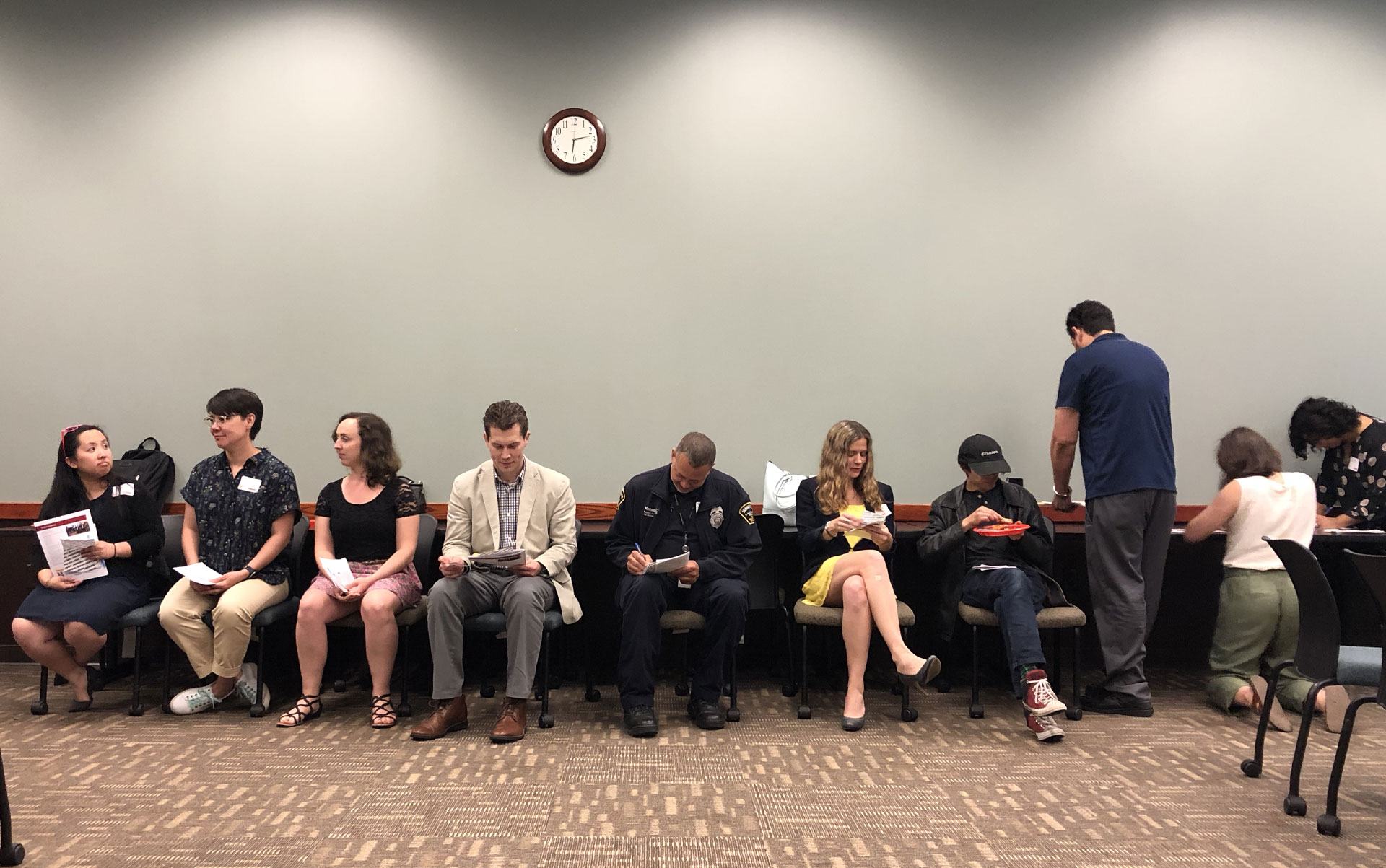
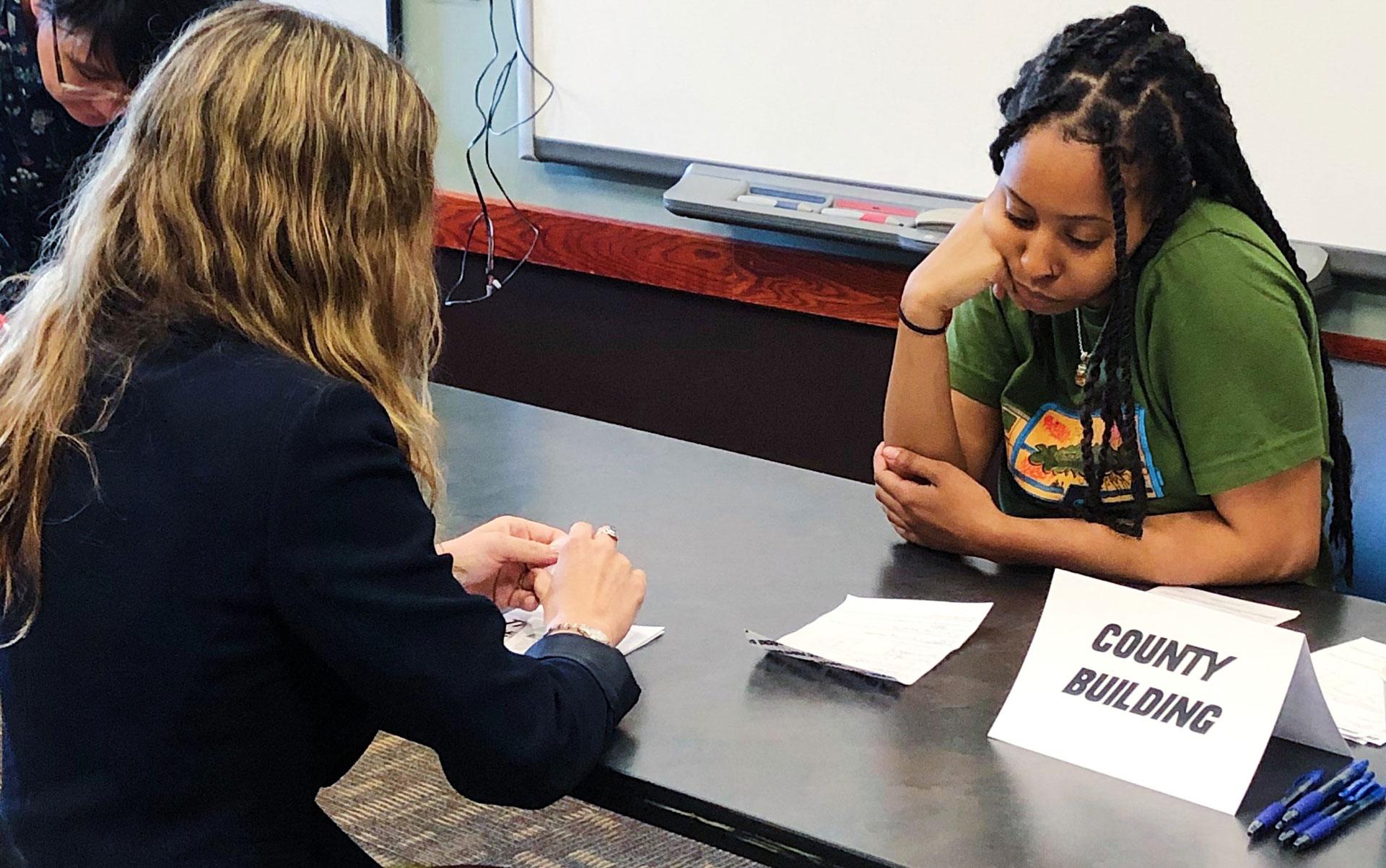
The simulation is facilitated by the apprentices who designed it, upending ageist power dynamics and challenging participants to reach beyond their lived experiences. Target audiences for this simulation are individuals with power and influence over housing and eviction policy in Minneapolis. Since its public debut in May 2019, Tactical apprentices have been hired to facilitate this simulation for roughly 245 people, including the entire staff of the City of Minneapolis’ Regulatory Services staff. “I feel like we’re impacting policy directly and the Regulatory Services workers in North Minneapolis and the way they treat the people in North Minneapolis,” says Bird Coulter (17), a Tactical apprentice. “I feel like getting to talk to them personally and train them personally definitely had an effect on North Minneapolis.”
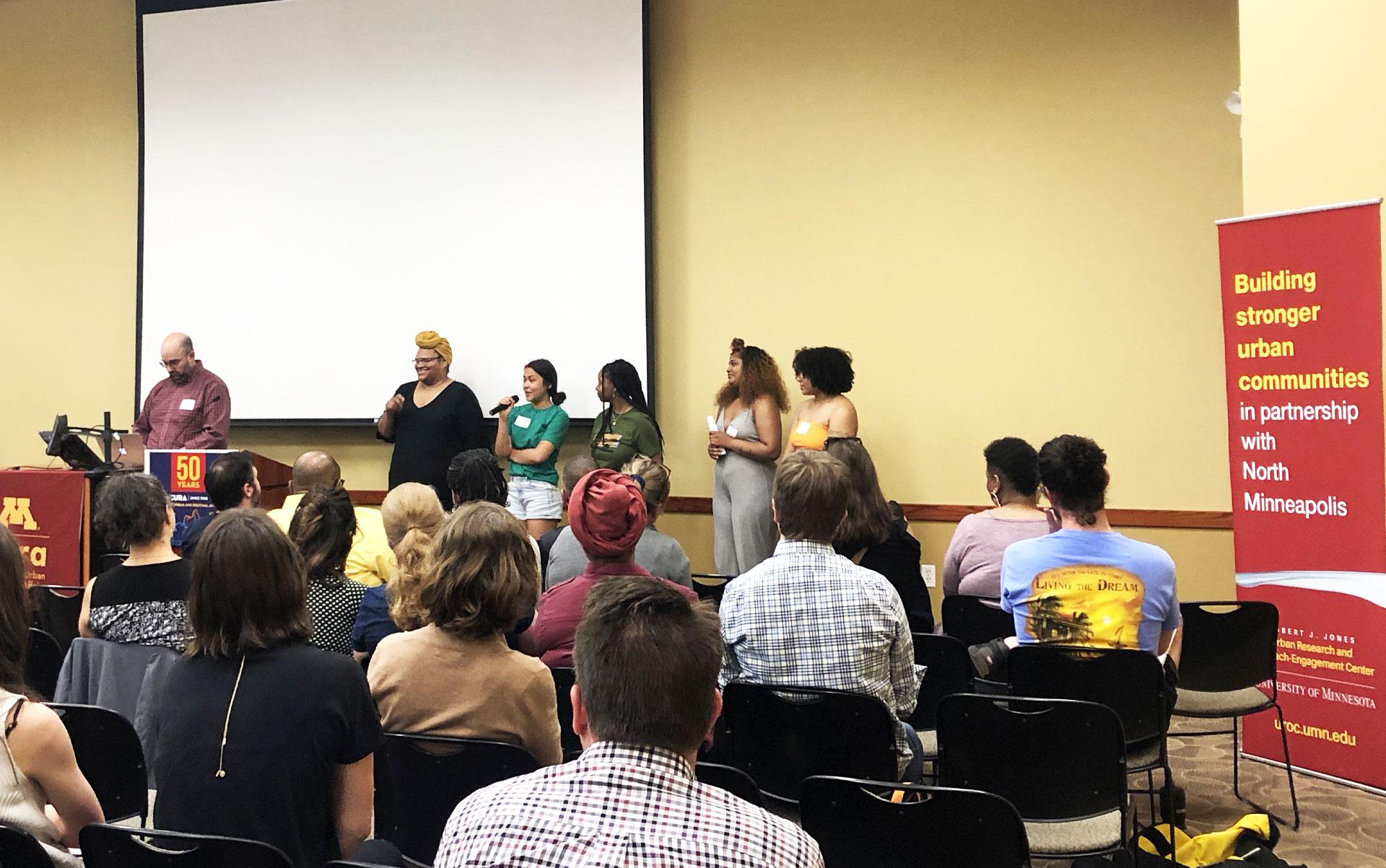
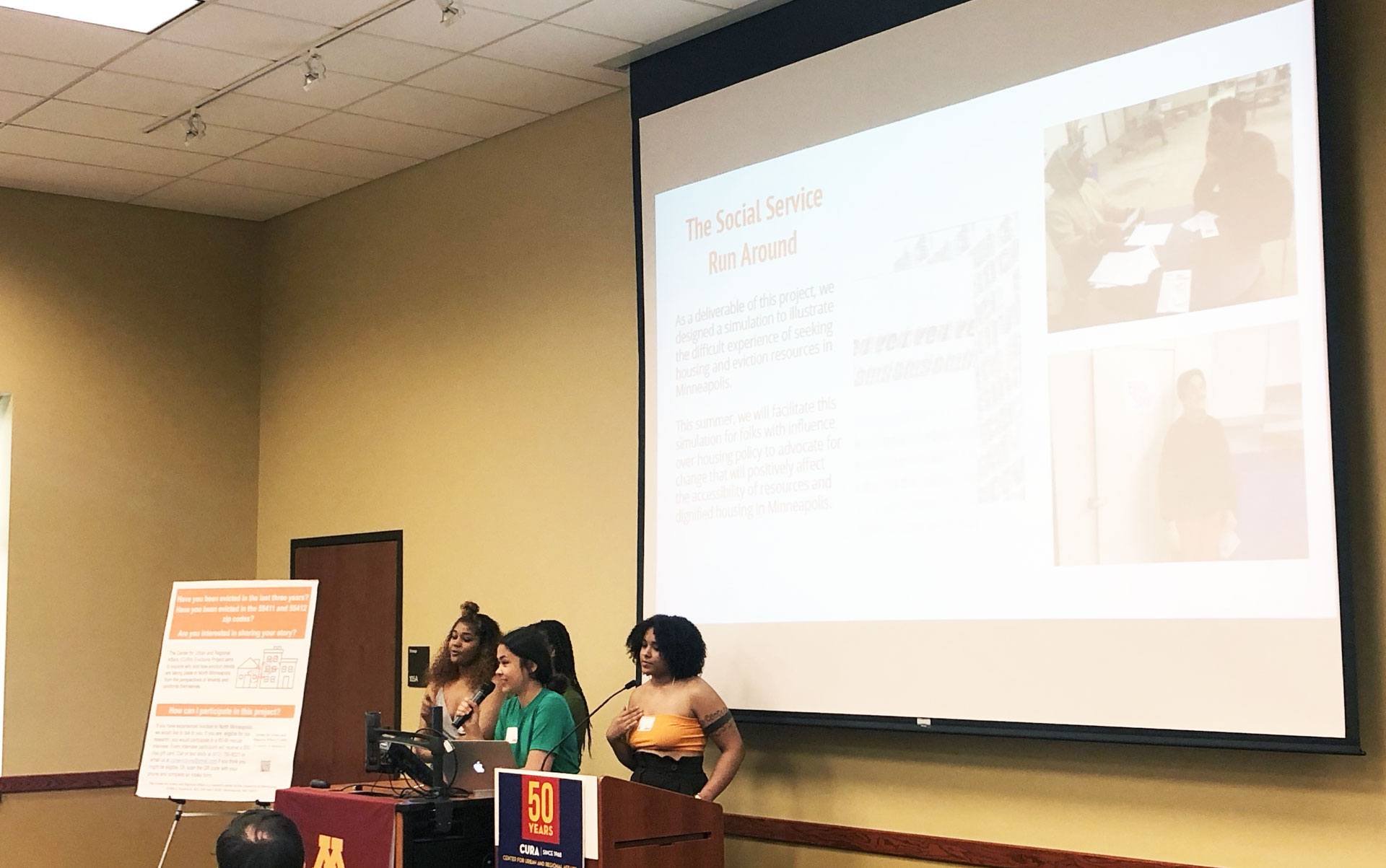
The YPAR method aligns with JXTA’s ethos around heuristic learning, or learning by doing, and empowers youth with the knowledge that they have the capacity to positively impact their communities. “I learned how to design a simulation and facilitate it! That’s grown folks’ work, and we’re getting a grown folks’ wage,” says Taisia Cleveland (18), a Tactical apprentice. “I learned qualitative data analysis. When we first started, I wasn’t sure if I could do it, but I did it, and I’m glad the staff facilitators pushed me to do it. And now I know I can do it.”
Facilitating SSRA simulations with City of Minneapolis staff has already proven to be impactful. “Our department and our employees make decisions that impact people’s housing every day,” says Rose Lindsay, Communications Deputy Director at the City of Minneapolis. “Without truly understanding how the social service system works, it might be easy for someone who has not had exposure to believe that someone can access resources quite readily. The Juxtaposition Arts simulation offered an opportunity for our employees to see inside that system and experience first-hand the frustrations that people live daily and understand just how impossible it is to get ahead, that living in poverty or housing insecurity is a full-time job in and of itself! When they go and do their inspections, they might just have a broader idea of what others are experiencing and go about their work in a more empathetic manner.”
In addition to the simulation, apprentices also designed a housing and evictions resource handbook, detailing what specific support Minneapolis agencies and nonprofits offer, eligibility information, what materials to bring in to begin paperwork, and nearby bus lines. “I’ve learned how to lay out a page like a boss,” says Elijah (19), a Tactical apprentice, “I learned proportions, where text should go, spacing. How to lay out information in a way that is legible to folks. I learned that some of what’s written about the resources available can feel patronizing to the reader. It’s like when you’re reading a kids’ book and when you’re reading an adult book. You see the difference in the way that the information is presented.” Tactical Lab is currently working on a printing and distribution plan for the handbook.
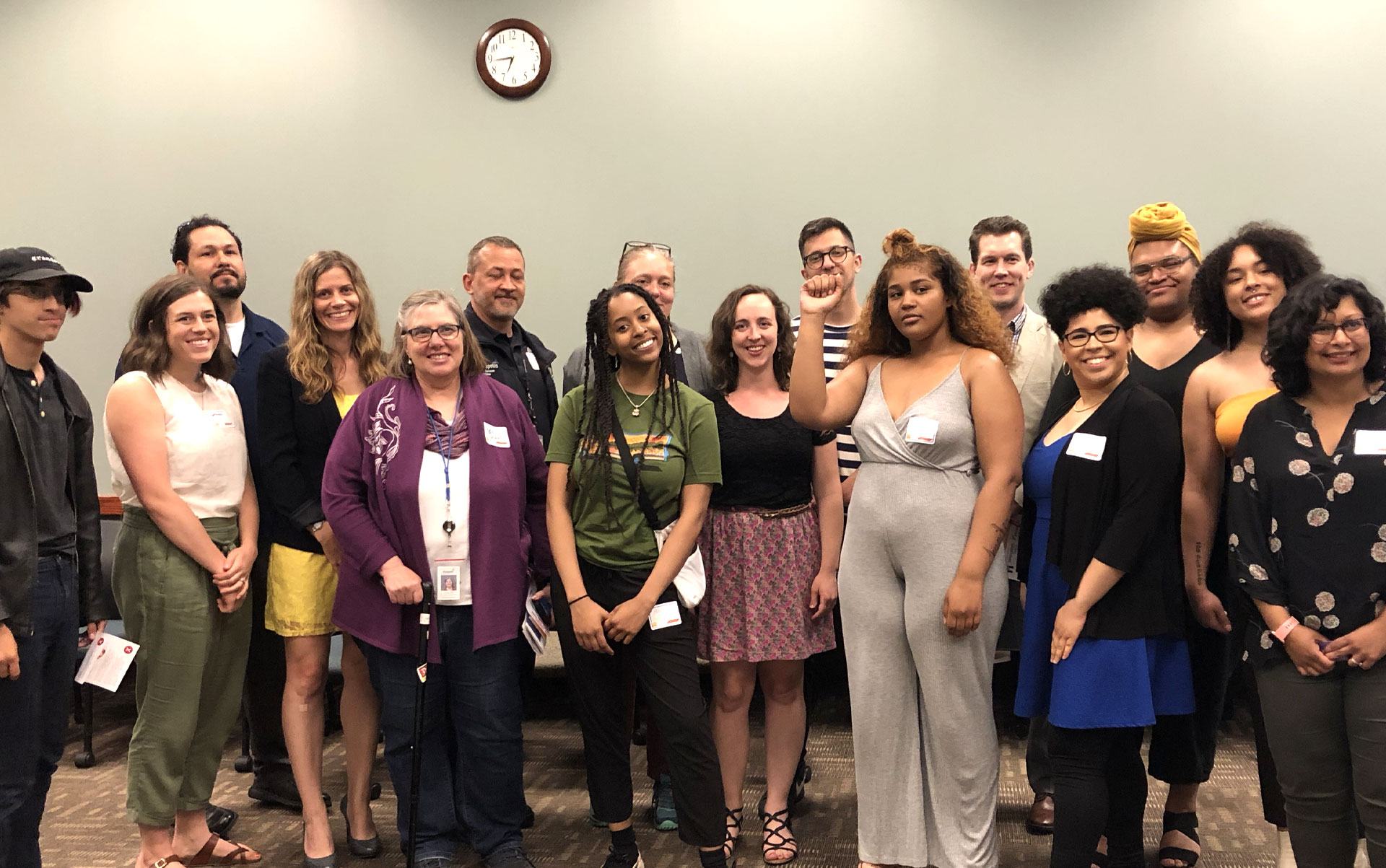
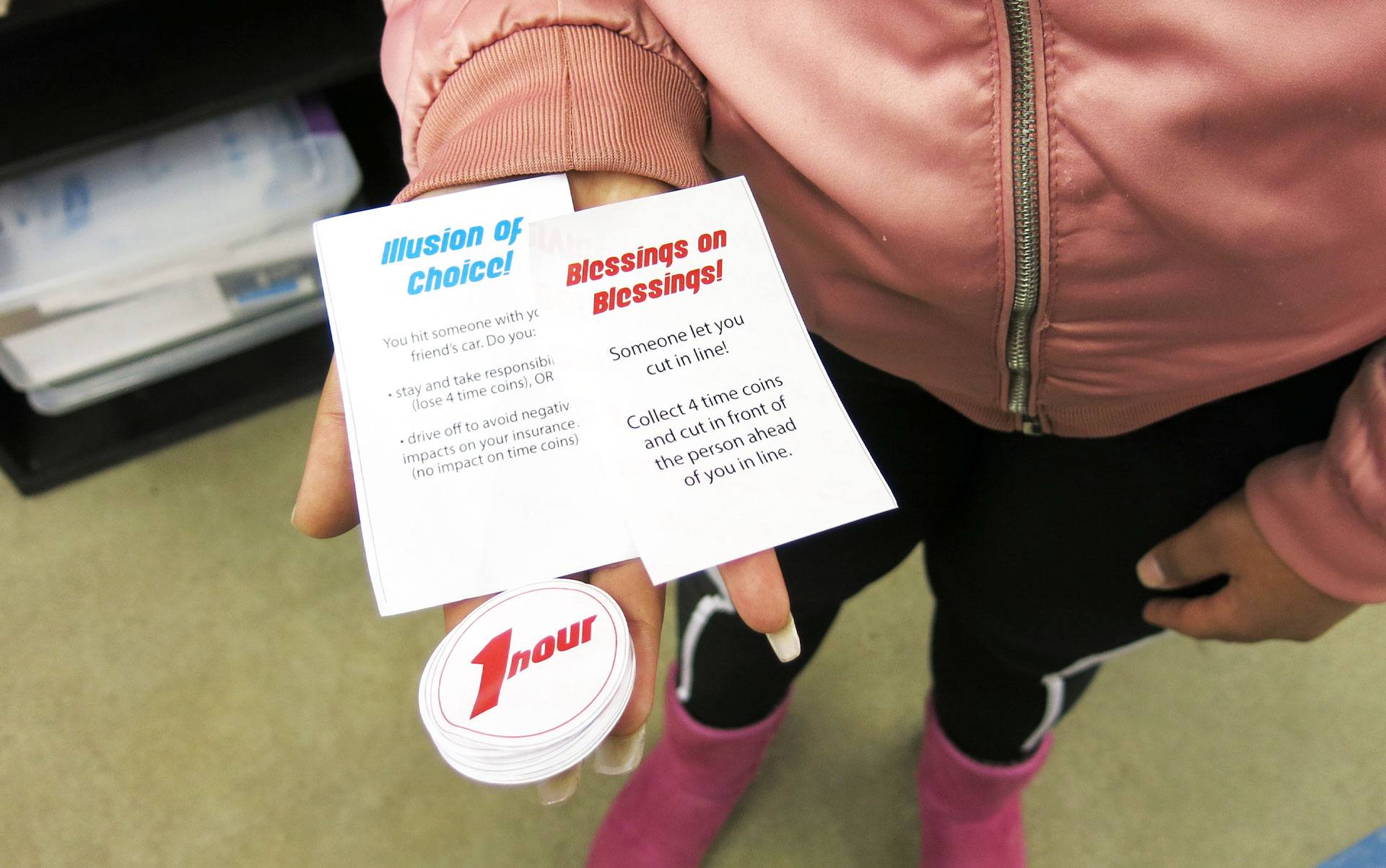
JXTA’s Tactical Lab has recently received another round of YPAR funding from Youthprise to develop a project examining bias training within the Minneapolis Police Department and the ways in which culture and identity inform the creation and purpose of community-led safety strategies. “For the next YPAR project on community safety strategies,” says Bird, “I want to learn about how things like JXTA can help prevent violence and the need for policing. And the sense of community that we have here can go so much farther than people think when we think about what protection means.”
“We’re doing research on the history of police because they used to be slave catchers, retrieving property and returning it back to its ‘owners’. We need to do research on our rights, the 13th amendment, everything. We’re gonna get deep into it,” says Taisia.
“We got us. I feel like right now there’s a divide between folks, specifically folks of color and who’s being treated worse by police. But no one is safe,” Elijah says. “I feel like just knowing that your community has you means that those attacks don’t mean nothing. Can’t nobody hurt you. Strength in numbers.”
To learn more about how to hire JXTA to facilitate The Social Service Run Around for your team, please contact Adrienne Doyle at adrienne.doyle@juxtaposition.org.
